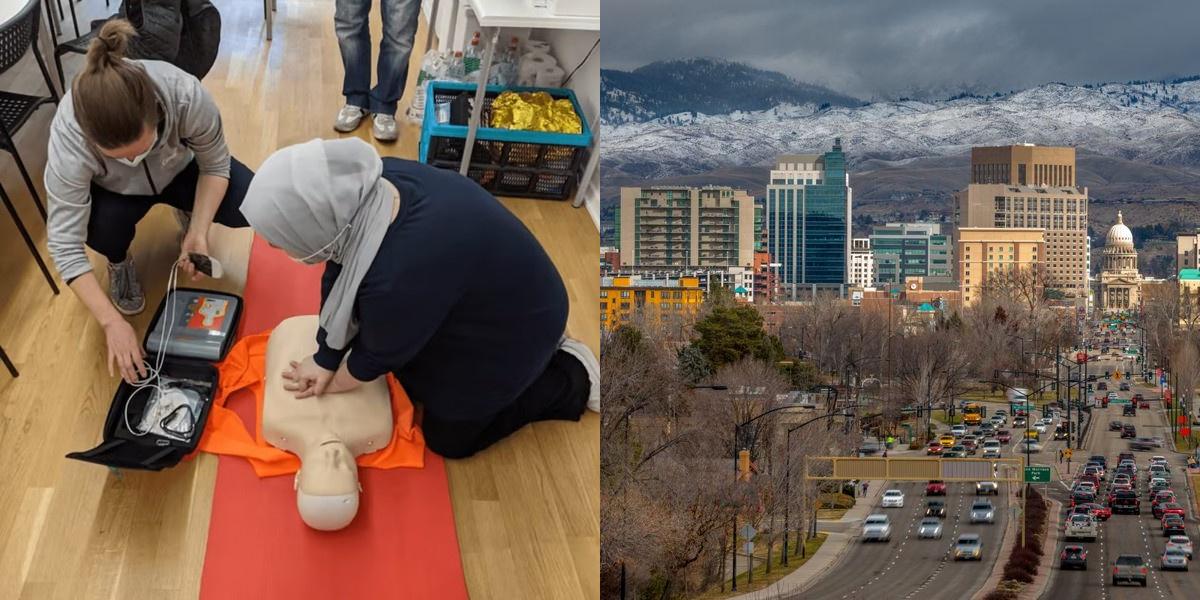What is a Paramedic?
Paramedics are highly skilled emergency medical professionals who provide advanced medical care to patients in critical and emergency situations. They are trained to assess patients, administer medications, perform advanced medical procedures, and provide life-saving interventions.
Responsibilities of a Paramedic include:
- Responding to emergency calls and providing immediate medical care to patients
- Assessing the patient's condition and determining the appropriate treatment
- Administering medications, including intravenous fluids and injections
- Performing advanced medical procedures, such as intubation and defibrillation
- Collaborating with other healthcare professionals to ensure proper patient care
- Transporting patients safely to the hospital or other healthcare facilities
Work Settings for Paramedics
Paramedics can work in various settings, including:
- Ambulance Services: Paramedics often work in ambulances, responding to emergency calls and providing on-site medical care.
- Hospitals: Paramedics may also work in hospital emergency departments, where they assist in the treatment of critically ill or injured patients.
- Fire Departments: Many fire departments employ paramedics as part of their emergency response teams.
- Air Medical Services: Some paramedics work on helicopters or airplanes, providing medical transport for critically ill or injured patients.
How to Become a Paramedic in Idaho?
To become a Paramedic in Idaho, one must first complete an accredited Paramedic education program, which typically takes 1-2 years. After graduating, individuals must pass the National Registry of Emergency Medical Technicians (NREMT) exam to obtain their Paramedic certification. Once certified, they can search for Paramedic job opportunities in Idaho, where they can earn a competitive salary.
Requirements to Become a Paramedic in Idaho
To become a paramedic in Idaho, you must meet the following requirements:
- Education: You must complete a state-approved paramedic training program, which typically takes 1-2 years to complete. These programs provide comprehensive training in emergency medical care and include both classroom instruction and hands-on clinical experience.
- Certification: After completing the training program, you must pass the National Registry of Emergency Medical Technicians (NREMT) paramedic certification exam. This certification is required in order to work as a paramedic in Idaho.
- Licensure: Once you have obtained your NREMT certification, you must apply for a state license from the Idaho Bureau of EMS and Preparedness. This license is necessary to practice as a paramedic in the state.
How do I get my Paramedic certification?
If you have a passion for helping others and thrive in high-pressure situations, a career as a paramedic might be the perfect fit for you. As a paramedic, you will be responsible for providing emergency medical care to individuals in need. This includes assessing patients, administering medication, and performing life-saving procedures.
To become a paramedic, you will need to complete a certification program. The requirements vary by state, but most programs include a combination of classroom instruction, hands-on training, and clinical experience. Here is a step-by-step guide on how to get your paramedic certification:
1. Research the requirements in your state: Before you begin your journey to becoming a paramedic, it's important to research the specific requirements in your state. Each state has its own set of rules and regulations for paramedics, so it's essential to understand what you need to do to meet the requirements. You can find this information on your state's Department of Health or Emergency Medical Services website.
2. Complete a basic EMT program: In most states, becoming a paramedic requires first obtaining certification as an Emergency Medical Technician (EMT). EMTs provide basic medical care and transportation to patients. To become an EMT, you will need to complete a state-approved EMT program, which typically takes about six months to one year to complete.
EMT programs cover topics such as patient assessment, airway management, CPR, and basic medical procedures. You will also gain hands-on experience through clinical rotations and ride-along with ambulance crews. Once you have completed your EMT program, you will need to pass the National Registry of Emergency Medical Technicians (NREMT) exam to become certified as an EMT.
3. Gain experience as an EMT: After becoming certified as an EMT, it's important to gain some experience working in the field. This will not only give you practical experience but also give you a taste of what it's like to work as a paramedic. You can gain experience by working for an ambulance service, hospital, or other healthcare facilities.
During this time, it's a good idea to continue your education and training. Take advantage of any continuing education courses or workshops that are available to you. This will help you stay up to date with the latest advancements in emergency medicine and make you a more competitive candidate for paramedic programs.
4. Enroll in a paramedic program: Once you have gained some experience as an EMT, you can enroll in a paramedic program. These programs are typically offered by community colleges or technical schools and take about one to two years to complete. Paramedic programs are more advanced than EMT programs and cover topics such as advanced life support, trauma care, and pharmacology.
In addition to classroom instruction, paramedic programs also include hands-on training and clinical rotations. During these rotations, you will work alongside experienced paramedics and gain practical experience in a variety of settings, such as hospitals, ambulances, and emergency rooms.
5. Pass the National Registry exam: After completing your paramedic program, you will need to pass the National Registry of Emergency Medical Technicians (NREMT) exam to become a certified paramedic. The NREMT exam consists of both written and practical components and is designed to assess your knowledge and skills as a paramedic.
Once you have passed the NREMT exam, you will be eligible to apply for paramedic licensure in your state. The specific licensure requirements vary by state, so be sure to research the requirements in your state and submit all necessary paperwork and fees.
How do I get a job as a Paramedic?
After obtaining your paramedic certification, the next step is to find a job as a paramedic. Here are some steps you can take to increase your chances of landing a job as a paramedic:
1. Update your resume and cover letter: Before you start applying for paramedic jobs, take the time to update your resume and cover letter. Highlight your relevant education, certifications, and experience. Be sure to include any specialized training or skills you have acquired that make you stand out as a candidate.
2. Research potential employers: Next, research potential employers in your area. This could include ambulance services, fire departments, hospitals, and other healthcare facilities. Find out what their hiring requirements are and familiarize yourself with their application process.
3. Network within the field: Networking is an important part of finding a job as a paramedic. Attend job fairs, conferences, and other industry events to meet professionals in the field. Join professional organizations and online forums where you can connect with other paramedics and learn about job opportunities.
4. Apply for jobs: Once you have updated your resume, researched potential employers, and networked with professionals in the field, it's time to start applying for jobs. Submit your resume and cover letter to the employers you have identified as potential fits for your skills and experience.
5. Prepare for interviews: If your application is successful, you will be invited for an interview. Take the time to prepare for the interview by researching common interview questions and practicing your answers. Be prepared to discuss your education, experience, and why you are interested in working as a paramedic.
During the interview, be professional, confident, and enthusiastic. Highlight your relevant skills and experience and demonstrate your passion for helping others. Be sure to ask questions about the organization and the specific role you are applying for.
6. Accept a job offer: If you are successful in your interviews, you may receive a job offer. Take the time to carefully consider the offer and evaluate if it aligns with your career goals and objectives. If everything looks good, accept the offer and prepare for your new role as a paramedic.
Career Paths and Opportunities after Becoming a Paramedic
Becoming a paramedic opens up a wide range of career paths and opportunities. Here are some potential career paths you can pursue after becoming a paramedic:
-
Advanced Practice Paramedic: As an advanced practice paramedic, you will have additional training and certifications that allow you to perform advanced procedures and provide specialized care. This may include administering advanced medications, performing invasive procedures, or providing critical care transport.
-
Flight Paramedic: Flight paramedics work on medical helicopters or airplanes, providing emergency medical care to patients in remote or inaccessible locations. This is a high-demand and high-intensity role that requires additional training and certifications.
-
Critical Care Paramedic: Critical care paramedics work in critical care transport units or hospital emergency departments, providing advanced life support to critically ill or injured patients. This role requires additional training and certifications in critical care medicine.
-
EMS Educator: If you have a passion for teaching, you can pursue a career as an EMS educator. In this role, you will be responsible for training and educating aspiring paramedics and EMTs. This can be done through community colleges, technical schools, or private training companies.
-
EMS Management: For those interested in a leadership role, a career in EMS management may be a good fit. As an EMS manager, you will be responsible for overseeing the operations of an ambulance service or EMS agency. This includes managing staff, ensuring compliance with regulations, and ensuring the delivery of high-quality care.
-
Firefighter/Paramedic: Many paramedics choose to become firefighters as well. Firefighters/paramedics respond to emergency calls, provide medical care, and also fight fires. This career path requires additional training and certifications in firefighting.
Frequently Asked Questions





